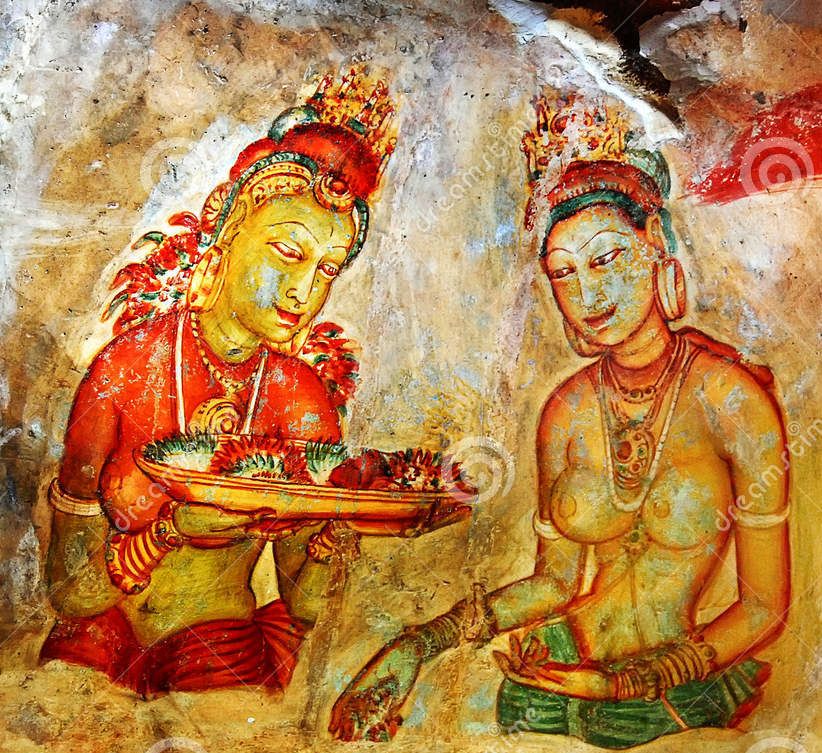
About 1600 years ago, there was a King in Ceylon by name of Kasyapa who rule from 477 to 495 AD. He had a fight with his usual clergy priests and shifted his capital to Sigriya. Here on the mountain rock, he had about 500 paintings painted of probably the ladies of his harem. Only 19 survived to this day, even those defiled with time. The creation is the most unusual creation of its kind and a wonder of the world in all ways. Sensuous to the extreme, they look like goddesses from the sky, floating above the painted clouds, as only half of the body is portrayed of the ladies. But does the ladies look like that from Ceylon? One can only guess their ethnicity. But on thing is sure, the works are a continuation of the AJANTA school, or Central Asian in origin. The chiseled faces, the long limbs, particular type of bosoms, all reflect Central Asian themes, in the newer settings. That not only Sigriya, or Ajanta or even Bagh, the antecedent of all these cave paintings are link to the Central Asian route, and ultimately to Sassanian Iran.
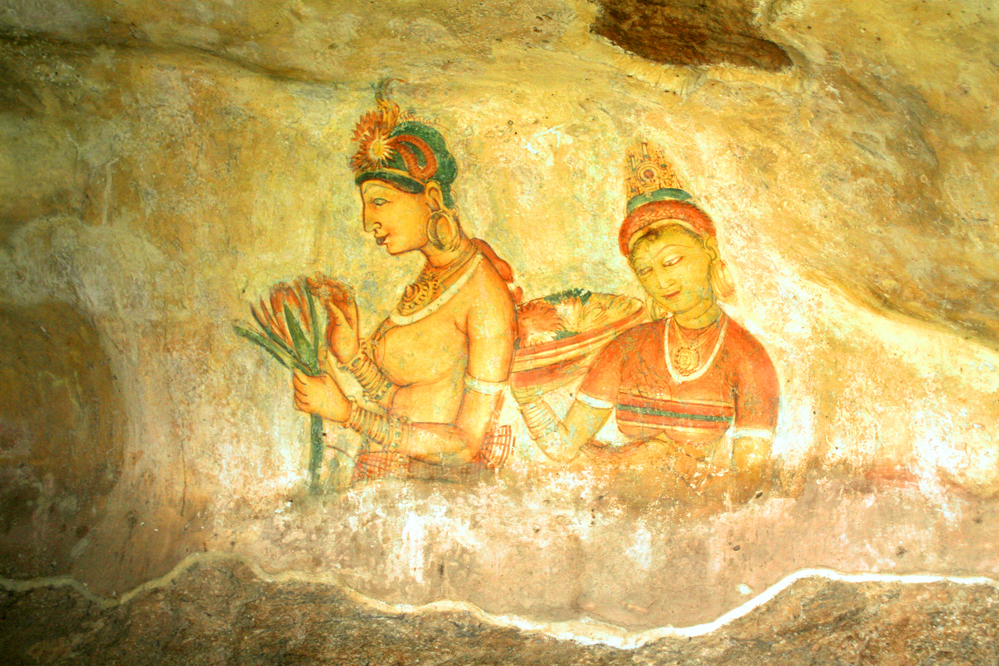
Dr Ananda K. Coomaraswamy, who left Hinduism for Christianity, is still considered a pioneer authority on Hindu Art. In his book on Sinhalese Art, he says about Sigriya painting as:
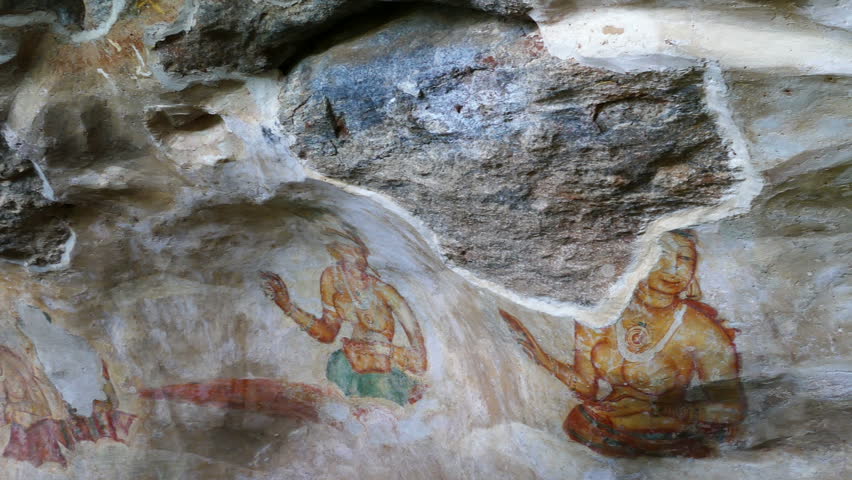
“The Sigiri paintings show that Ceylon was in close touch with the art growth of the time. But (Sigiri) they stand isolated from the historical development of later art, which possess far less capacity for drawing the human form.The Sigiri paintings are somewhat sensuous and though apparently representing goddesses and attendants, are not markedly religious in feeling. They appear to have left no trace on later Sinhalese art. Were they not thus an isolated landmark, it would be easier to fit them into the historical evolution of Sinhalese art as we know it.”

Dr Coomaraswamy admits that Sigriya is “partly affected by Chinese influence”, which obviously means Central Asian here. Most scholars agree to the Central Asian origin, but are unsure, whether the artists were from the region, or came from outside. The School is certainly Central Asian Art, the artists unknown. Probably some Masters came and trained local artists too in the same way. This is a routine which continues to the Mughal times when artists came with Emperor Babur as well as Emperor Humayoun to this region, and trained hundreds of local artists in the school of painting. That is how enrichment occurs, when cultures instead of clashing, amalgamate themselves in the new environment. Three cheers for Art!
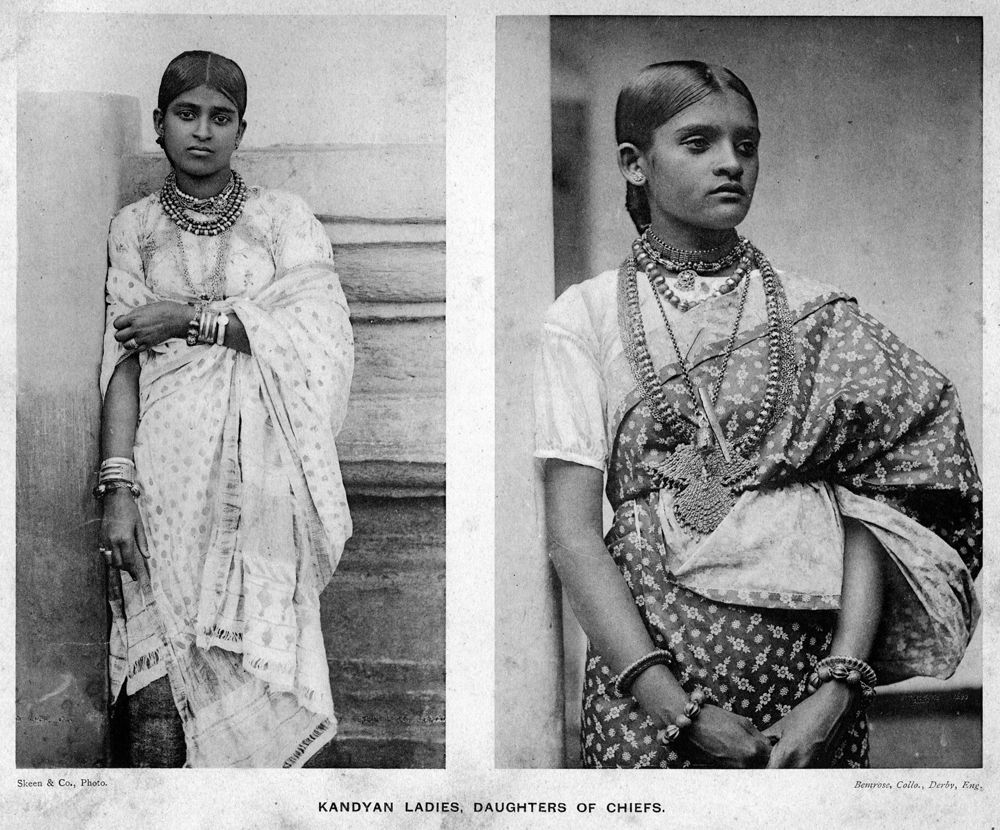
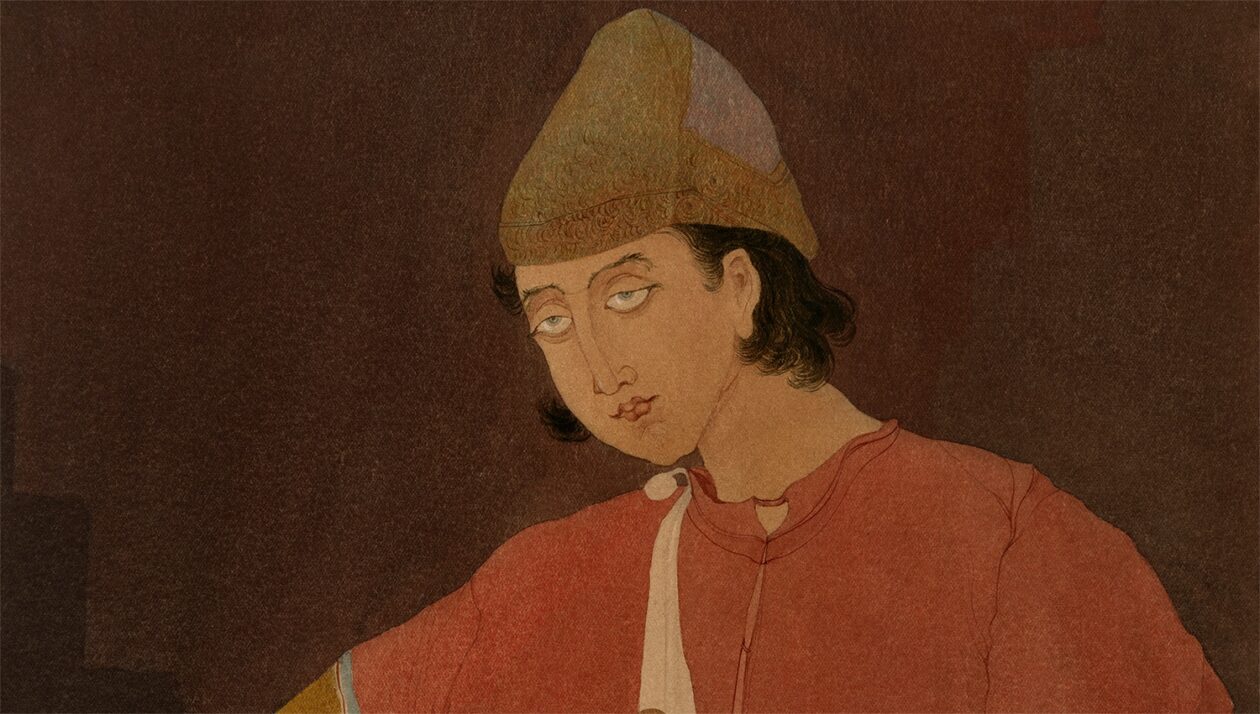
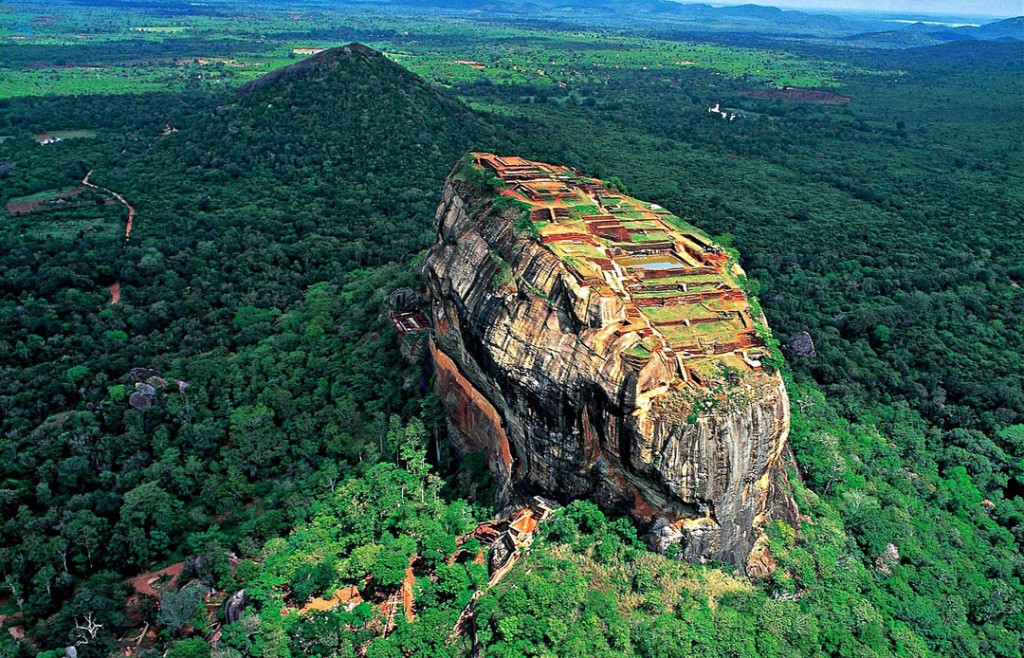
In fact the whole region connected through Central Asia and its art.